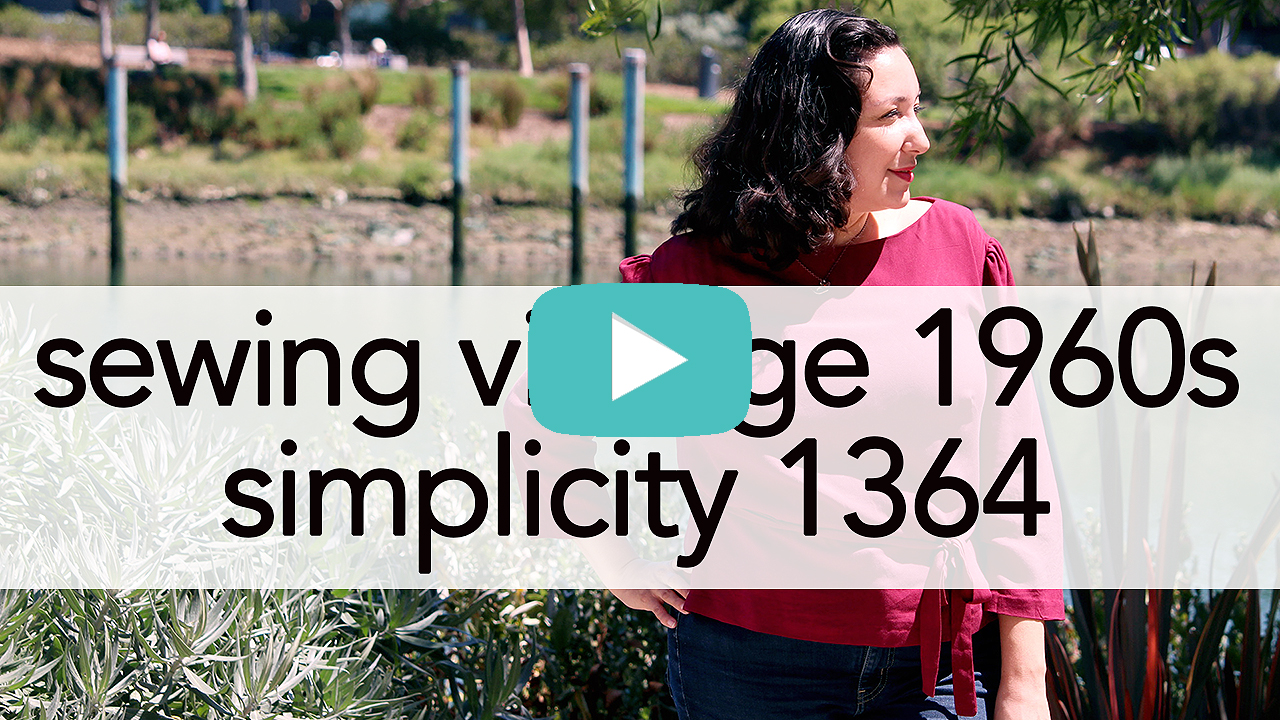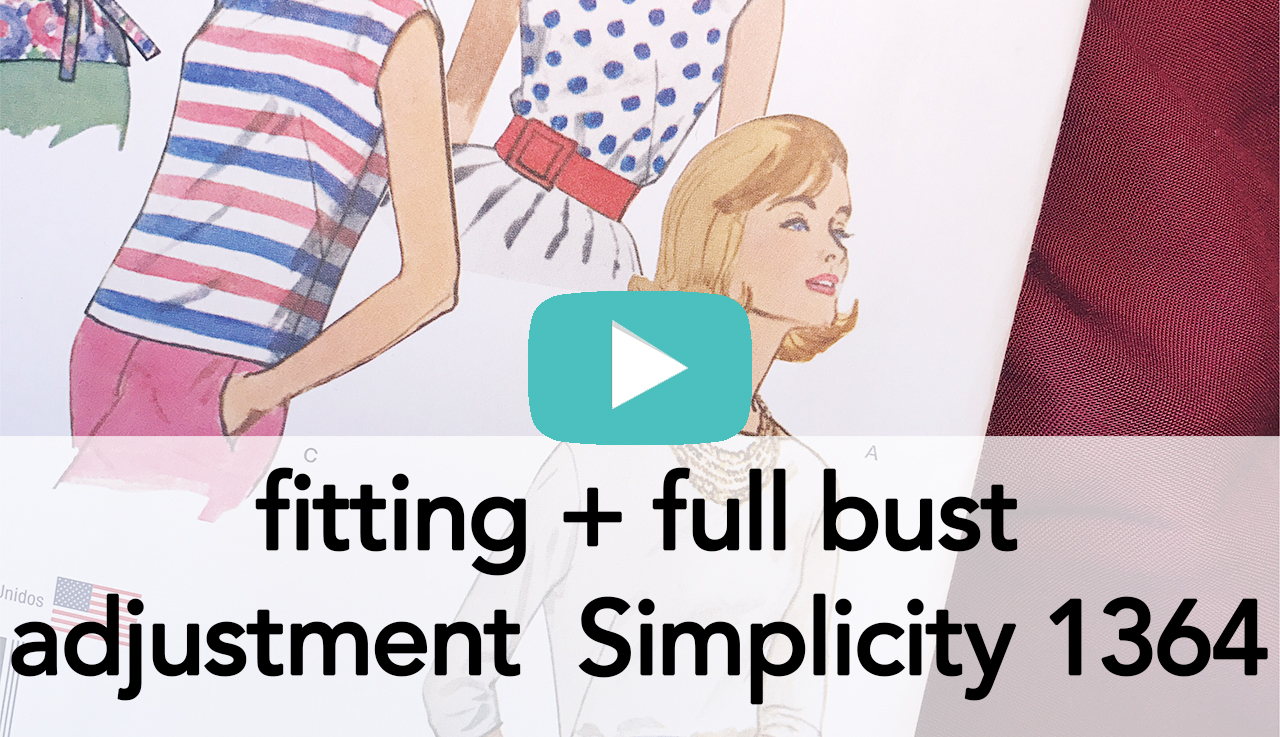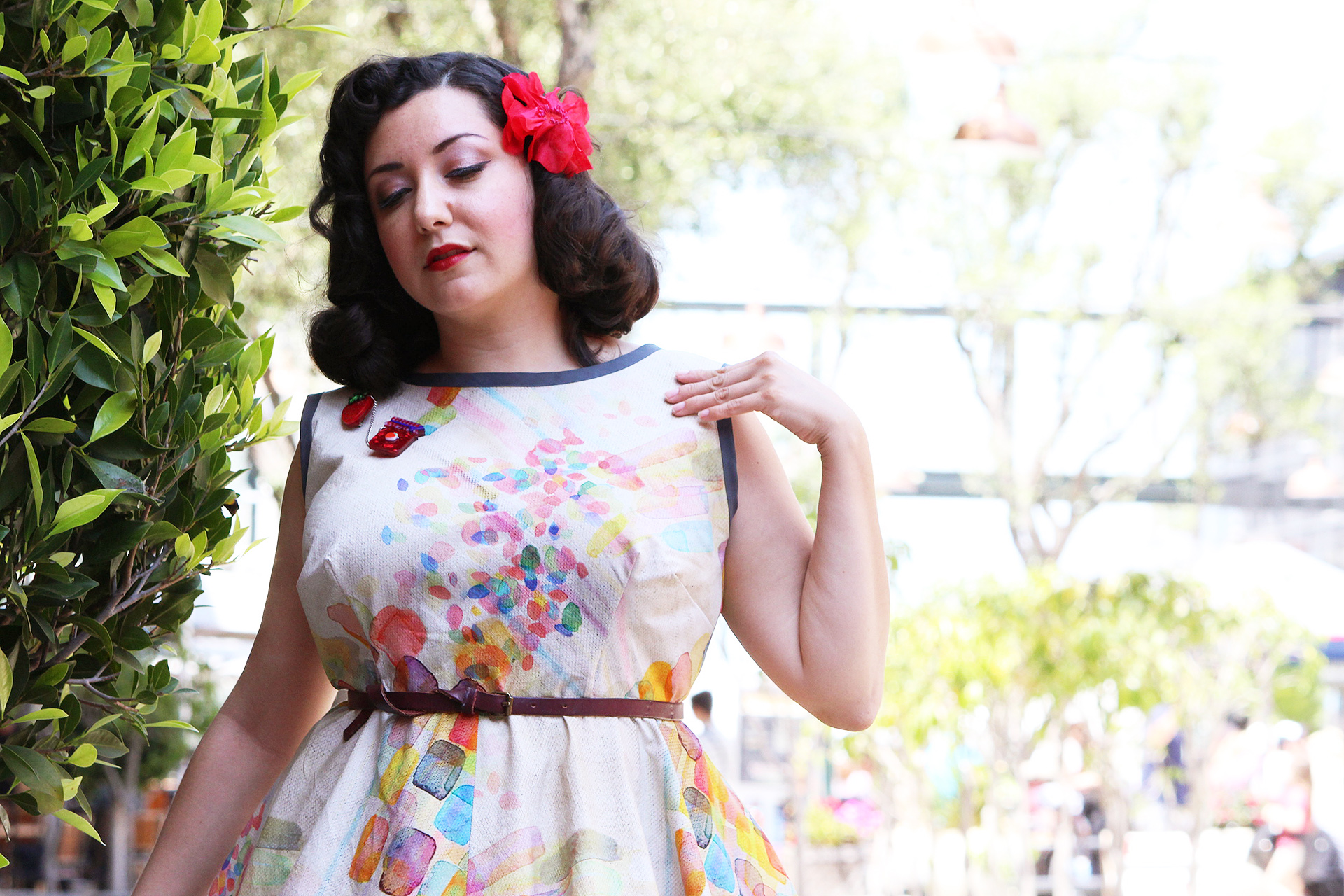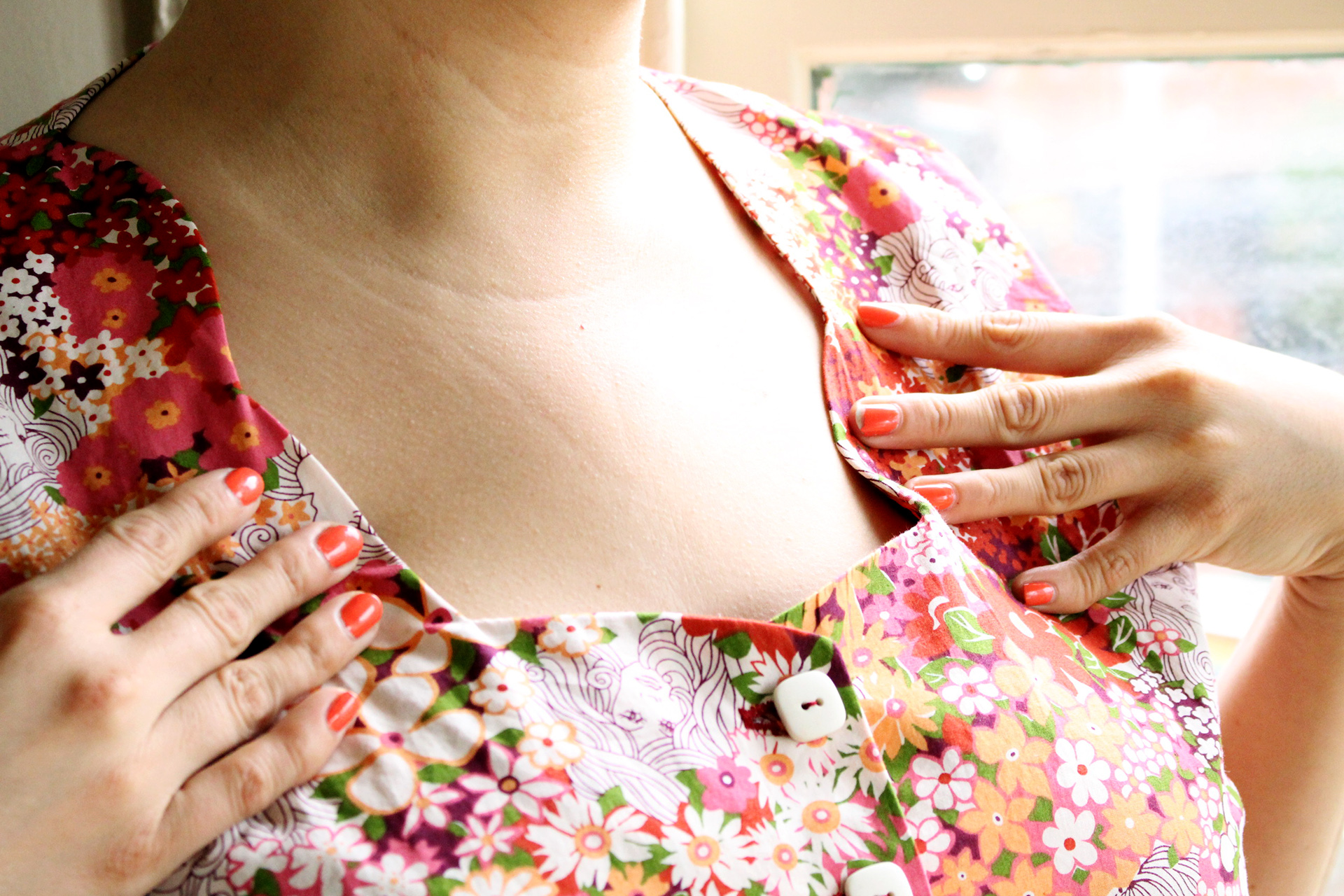
After two years away (and a rough 2020) I knew it was time to return to the blogosphere with the garment which started it all: Simplicity 1460. In this post, we’ll be chatting about how to sew a 1950s peplum in all it’s gorgeousness, from the new and improved VoT HQ!
Watching the original video I filmed in 2016 (!!) and reading about this vintage pattern again made me incredibly nostalgic.
It wasn’t just me looking at photos of this blouse. It was being reminded of why I love blogging and sewing on camera. Of why I kicked off this project in the first place.

It reminded me of why I like to talk about vintage sewing and advocate for it so much.
Click the video above to watch the full breakdown of how to sew a 1950s Peplum!

Here are my tips on how to sew this vintage blouse:
Fitting can be a challenge with this piece.
All in all, I spent nearly 15 hours attempting multiple fitting techniques around a full bust adjustment, leading me to settle with the fit seen in this piece.
The final fit was a compromise, which is disappointing with 20+ years sewing experience! Challenges with fit for my size included:
- Doing an FBA on a French double dart (I recommend splitting the FBA across both darts!)
- Finding the right positioning for my bust point (I recommend measuring from the shoulder point down to get the best fit)
- Allowing enough ease for the button placket at the center front (it’s better to have extra overlap at the placket than not enough)

The neckline on this vintage peplum blouse is extremely beautiful!
To achieve the desired scallop effect, sew carefully around the facing:
- Slowly sew around each facing piece, picking up the presser foot to adjust the fabric as needed to maintain a smooth curve
- If part of the stitch line is too straight, unpick and do that curve again! Because the curves are prominent around the neck, they’re highly visible. A stitch line which isn’t smooth will be obvious
- Trim and clip all seam allowances to ensure that turning the facing inside-out will display a smooth curve

When learning how to sew a 1950s peplum – or any peplum for that matter! – take care to stay stitch the top curve to make sure it doesn’t warp!
By sewing a simple stitch line across the top (at around ¼”) you can prevent the delicate peplum curve from being pulled and stretched. The pulling can (and will!) distort its grain, making it difficult to match up to the bodice.

The last tip is around the buttons in this piece! The pattern calls for three buttons, but I added four for extra protection and insure a comfortable fit for me.
Feel free to modify any pattern with additional buttons as needed. Remember that in most cases, button count is a suggestion, not a hard fast rule.
Sewing a vintage 1950s peplum is not complicated- it’s actually a lot of fun to make such a flattering piece!
In the comments below, please let me know if you’ve made this pattern before or if you’ve ever revisited an old sewing pattern with fresh eyes!
I would love to know how that went for you and if there was anything that stood out as you tackled it again!

Like what you see?

































